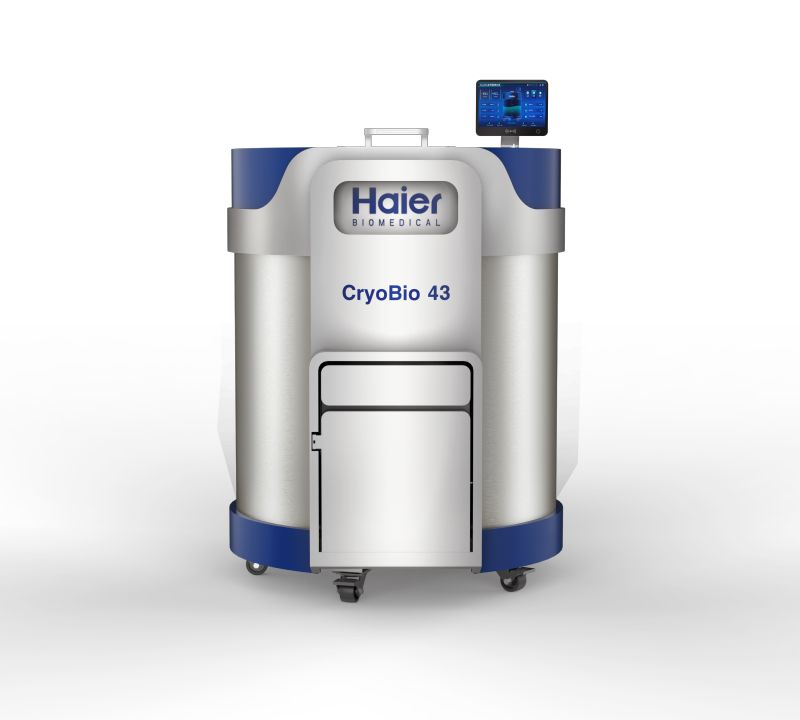Liquid nitrogen container is a special container used to store liquid nitrogen for long-term preservation of biological samples
Do you know how to use liquid nitrogen containers correctly?
Special attention should be paid to liquid nitrogen when filling,due to the ultra-low temperature of liquid nitrogen (-196℃), a little carelessness may lead to serious consequences, so what should be paid attention to when using liquid nitrogen containers?
01
Check upon Receipt and before Use
Check upon Receipt
Before receiving the product and confirming receipt of goods, please check with the delivery personnel whether the outer packaging has dents or signs of damage, and then unpack the outer package to check whether the liquid nitrogen container has dents or collision marks. Please sign for goods after confirming no problem in appearance.

Check before Use
Before filling the liquid nitrogen container with liquid nitrogen, it’s necessary to check whether the shell has dents or collision marks and whether the vacuum nozzle assembly and other parts are in good condition.
If the shell is damaged, the vacuum degree of the liquid nitrogen container will be reduced, and in severe cases, the liquid nitrogen container will not be able to maintain temperature. This will cause the upper part of the liquid nitrogen container to be frosted and lead to large liquid nitrogen loss.
Check the inside of the liquid nitrogen container to observe whether there is any foreign matter. If there is foreign body present, remove it and clean the inner container to prevent it from corrosion.
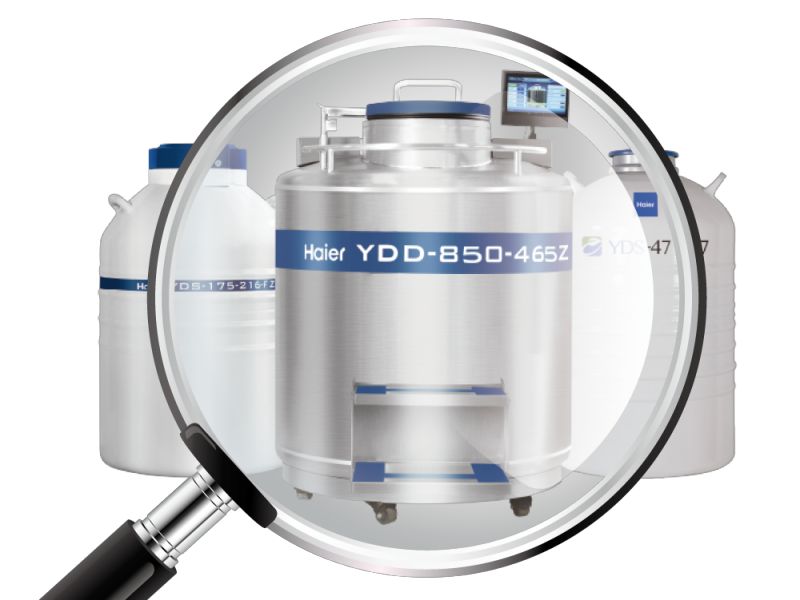
02
Precautions for Liquid Nitrogen Filling
When filling a new container or a liquid nitrogen container that has not been used for a long time and in order to avoid fast temperature drop and damage the inner container and reduce the use time limit, it is necessary to fill it slowly in a small amount with an infusion tube. When the liquid nitrogen is filled to one third of its capacity, let the liquid nitrogen stand still in the container for 24 hours. After the temperature in the container is completely cooled and the heat balance is reached, continue to fill the liquid nitrogen to the required liquid level.
Do not overfill the liquid nitrogen. The overflowing liquid nitrogen will quickly cool the outer shell and cause the vacuum nozzle assembly to leak, leading to premature vacuum failure.
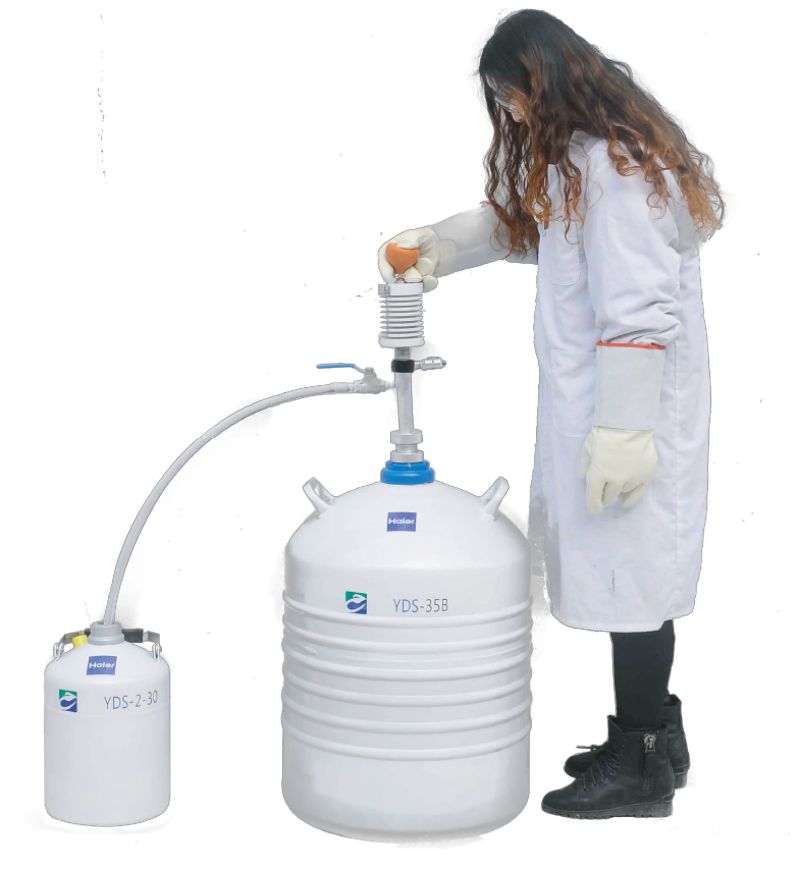
03
Daily Use and Maintenance of Liquid Nitrogen Container
Precautions
·The liquid nitrogen container should be placed in a well-ventilated and cool place, avoid direct sunlight.
·Do not place the container in a rainy or humid environment to avoid frost and ice on the neck tube, cover plug and other accessories.
·It is strictly forbidden to tilt it, place it horizontally, put it upside down, stack it, bump it, etc., it is imperative that the container be kept upright during use.
·Do not open the vacuum nozzle of the container. Once the vacuum nozzle is damaged, the vacuum will lose efficacy immediately.
·Due to the ultra-low temperature of liquid nitrogen (-196°C), protective measures such as goggles and low-temperature gloves are required when taking samples or filling liquid nitrogen into the container.

Maintenance and Use
·Liquid nitrogen containers can only be used to contain liquid nitrogen, other liquids are not allowed.
·Do not seal the container cap.
·When taking samples, minimize the operation time to reduce the consumption of liquid nitrogen.
·Regular safety education for relevant personnel is required to avoid losses caused by improper operation
·During the process of being used, a little water will be accumulated inside and mixed with bacteria. In order to prevent impurities from corroding the inner wall, the liquid nitrogen container needs to be cleaned 1-2 times a year.
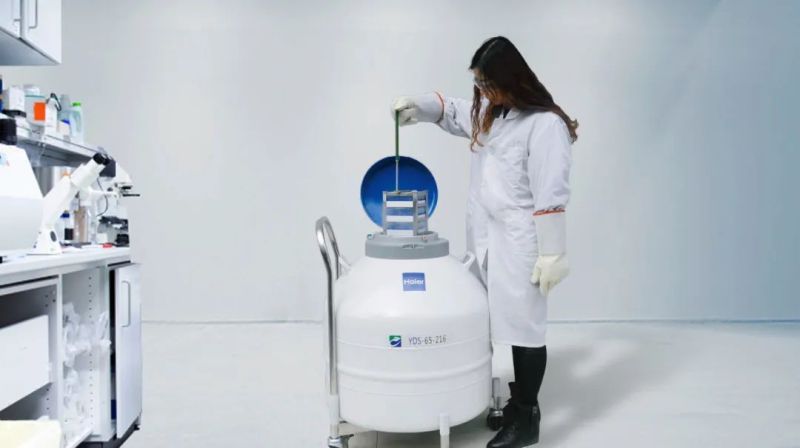
Liquid Nitrogen Container Cleaning Method
·Remove the pail from the container, remove the liquid nitrogen and leave it for 2-3 days. When the temperature in the container rises to about 0℃, pour warm water (below 40℃) or mix it with a neutral detergent into the liquid nitrogen container and then wipe it with a cloth.
·If any melted substances stick to the bottom of the inner container, please wash it off carefully.
·Pour out the water and add fresh water to rinse several times.
·After cleaning, place the liquid nitrogen container in a plain and safe place and make it dry. Natural air drying and hot air drying are both suitable. If the latter is adopted, the temperature should be maintained 40℃ and 50℃ and hot air above 60℃ should be avoided for fear of affecting the performance of the liquid nitrogen tank and shorten the service life.
·Note that during the entire scrubbing process, the action should be gentle and slow. The temperature of the poured water should not exceed 40℃ and the total weight should be more than 2kg.
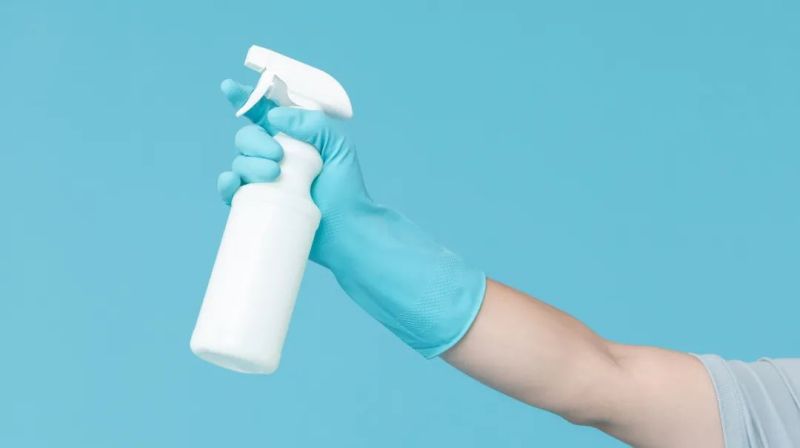
Post time: Mar-04-2024





